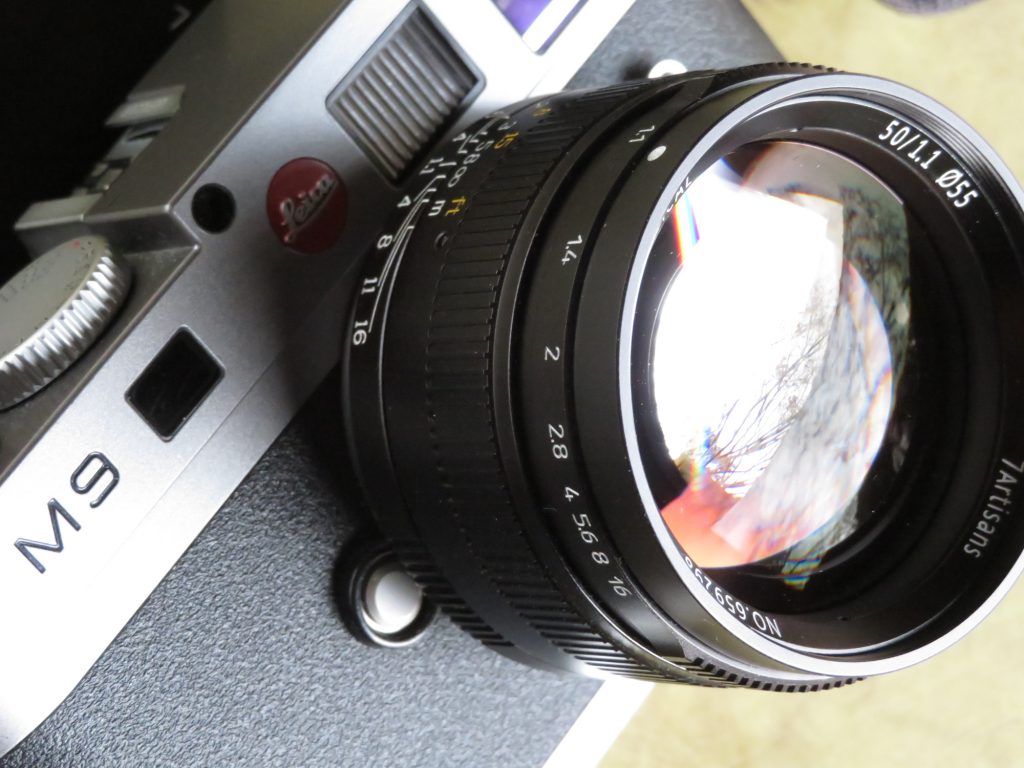
It graces any camera it is mounted on - whether its natural habitat of an M rangefinder or the Johnny-come-lately mirrorless SL and CL. So, viewed from the front of the camera, this little Nokton does look the business. The old f/1.2 Noctilux, while 20g heavier at 450g, is slimmer, with a 48mm thread. Yet the newer Nokton actually looks more impressive with its expansive front element surrounded by a 58mm filter thread. It has the scolloped focus ring, a very similar aperture ring and the same purposeful air. Remarkably, the f/1.1 VM Nokton looks a lot like that £15k classic. With the SL, wide open, even at the standard 50mm this is a fine portrait lens Looking good It’s up to you to decide whether or not it is worth £7,500 more than the Voigtländer. The Noctilux is definitely a much more effective light gatherer. It is much faster, too - I know the difference between f/0.95 and f/1.1 doesn’t sound much but it is in fact huge. The Noctilux is a more complex, more modern design and it has the edge. This is firmly in collector territory and shouldn’t worry us mere mortals.Īll this said, you would be mistaken if you believe I am suggesting that the Nokton is a straight replacement for the Noctilux, that it is just as good. This is a rare beast and will fetch between £12,000 and £15,000 according to Ivor Cooper at Red Dot Cameras in London. Go back a little further, to the much sought-after f/1.2 Noctilux (1966-1975) and you will have a shock. It’s a better lens, of that I am sure, but it damn well ought to be for the price.ĭelve a little deeper into Noctilore and you find the predecessor to the 0.95, the f/1 (which was made between 19) still commands £4,000 on the used market. It’s also bigger and heavier than the VM Nokton which makes it less of a go-to, day-to-day lens. That would perhaps be a mistake since the Noctilux occupies a rarified market segment. Inevitably we can’t help comparing it with Leica’s all-singing-and-dancing f/0.95 Noctilux which costs £8,265 or around £6,000 on the used market. The Nokton is a genuinely good all-rounder. But here we have the exception to prove the rule. Yes, I know, if it is too good to true it probably is, as a general rule. It offers a great deal of performance for a very low price, so low in fact that many potential buyers are discouraged simply because it looks too good to true.

It is a well constructed, ergonomically impressive standard-focal-length prime with a very fast aperture. This Nokton f/1.1 is an improved version of the original, according to Voigtlaender. It is capable of superb detail (crop below) With the CL, the Nokton is an ideal 75mm fast portrait lens. If you want to explore the nitty gritty - much of which has little bearing on your results - then there are reviews aplenty to choose from. Sometimes, it’s a mistake to get too technical.

I just use the thing and if it provides pleasing results, to me, then I’m happy. I should say at the outset that I’m not a lens tester and, to be honest, this isn’t a bad thing. I was able to borrow the 50mm Voigltänder f/1.1 Nokton for a few days, courtesy of Hardy Haase from the UK importers, Flaghead, It arrived around the time of the launch of the Leica CL and I was thus able to use it on the CL as well as on the M10 and SL. Keeping the SL company: The Nokton and the SL make a winning team


 0 kommentar(er)
0 kommentar(er)
